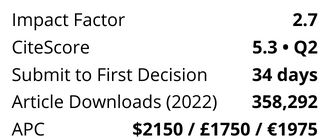Process-based nutrient models are increasingly used to determine the impact of future changes in land use, agriculture production practices and climate on the quantity and timing of nutrients reaching surface waters. Calibration of catchment-scale models to observed conditions can be difficult due to parameter uncertainty and the heterogeneity of catchment processes. Soft data, i.e. knowledge of processes gained through experimentation, have been suggested as one method of reducing uncertainty and producing a more accurate model of the processes that occur in a catchment. In this work, the Integrated Catchment model for Nitrogen was calibrated and validated for the Yläneenjoki catchment in south-western Finland by incorporating soft data. The calibration for 2003–2008 produced an adequate model of the in-stream nitrate concentrations (R2 = 0.45, NS = 0.42). However, model validation using data from 1997–2002 showed that the simulated in-stream nitrate concentrations were above the observed concentrations throughout the entire period (R2 = 0.34, NS < 0). These results show that soft data can be used to constrain model parameters, resulting in a more accurate model of the catchment, but do not guarantee the best validation results as the simulated processes may not occur at the same time and rate as they did in the catchment.
Skip Nav Destination
Article navigation
Research Article|
June 25 2013
Reducing uncertainty in the calibration and validation of the INCA-N model by using soft data
J. Randall Etheridge;
1Department of Biological and Agricultural Engineering, North Carolina State University, Raleigh, North Carolina, USA
E-mail: jretheri@ncsu.edu
Search for other works by this author on:
Ahti Lepistö;
Ahti Lepistö
2Finnish Environment Institute, Helsinki, Finland
Search for other works by this author on:
Kirsti Granlund;
Kirsti Granlund
2Finnish Environment Institute, Helsinki, Finland
Search for other works by this author on:
Katri Rankinen;
Katri Rankinen
2Finnish Environment Institute, Helsinki, Finland
Search for other works by this author on:
François Birgand;
François Birgand
1Department of Biological and Agricultural Engineering, North Carolina State University, Raleigh, North Carolina, USA
Search for other works by this author on:
Michael R. Burchell, II
Michael R. Burchell, II
1Department of Biological and Agricultural Engineering, North Carolina State University, Raleigh, North Carolina, USA
Search for other works by this author on:
Hydrology Research (2014) 45 (1): 73–88.
Article history
Received:
February 13 2013
Accepted:
May 05 2013
Citation
J. Randall Etheridge, Ahti Lepistö, Kirsti Granlund, Katri Rankinen, François Birgand, Michael R. Burchell; Reducing uncertainty in the calibration and validation of the INCA-N model by using soft data. Hydrology Research 1 February 2014; 45 (1): 73–88. doi: https://doi.org/10.2166/nh.2013.039
Download citation file:







